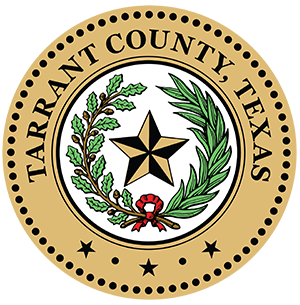Child Fatality Review in Texas
Origins of Child Fatality Review in Texas
In Texas, more than 4,000 children between the ages of birth and 17 die annually. Prior to 1995, apart from death certificate data collected through the Texas Bureau of Vital Statistics, no single agency tracked or assessed all of the child deaths in the state. In response, in 1994, Texas applied for and received grant funding through the Children’s Justice Act Grant (CJA), to underwrite a Child Fatality Review Team Project. The United States Congress passed the CJA legislation in 1986 with funding derived from a mandatory diversion of 4.5 percent of all fines paid by federal offenders, which was provided to the states for the purpose of improving the handling of child abuse, neglect and maltreatment cases. CJA began supporting efforts to develop multi-disciplinary, multi-agency child fatality review in Texas in 1992, and in 1994 formed a statewide committee to review the child death response system and make recommendations to the legislature. Texas Governor George W. Bush signed the legislation and the Child Fatality Review Team statute went into effect on September 1, 1995. Titled as Child Fatality Review and Investigation, the child fatality review team law is located in the Texas Family Code, Title 5, Chapter 264, Subchapter F, §264.501 – §264.515 of the statute, and was administered initially through the Texas Department of Family and Protective Services. In the 79th Legislative session, Senate Bill 6, an amendment to the existing code, was passed, transferring responsibility for the support and coordination of the Texas Child Fatality Review Team Committee (CFRTC) and all local Child Fatality Review Teams (CFRT) to the Texas Department of State Health Services.
The State Committee, or CFRTC, is a multi-disciplinary group of professionals selected from across the state with a membership reflecting the “geographical, cultural, racial and ethnic diversity of the state” §264.502 (d), and has a tripartite purpose:
- To understand the causes and incidence of child deaths in Texas;
- To identify procedures within the representative agencies to reduce the number of preventable child deaths; and
- To stimulate public awareness and make recommendations to the governor and legislature for effective changes in law, policy and practices.
Tarrant County Child Fatality Review
A primary reason for the development and utilization of local child fatality review teams is to identify and prevent child deaths caused by abuse and neglect. Texas has broadened the scope of review to include all preventable child deaths, with a focus on the public health perspective. In the mid-1990’s, Texas led the country in child abuse and neglect-related fatalities, and was also identified as having poor social conditions associated with child health and safety (e.g., poverty, unemployment, poor education, violence, lack of available health care, teen pregnancy and a large minority population). Child fatality review in Texas was established to address preventable deaths associated with those societal issues.
Local CFRT’s mirror the format of the CFRTC through death reviews on the local level utilizing the public health model. Reviewing local child deaths and the associated circumstances allows teams to identify community trends, develop prevention strategies and promote public awareness while enhancing investigative findings through improved inter-agency collaboration. In Texas, CFRT’s complete a retrospective review of all sudden and unexpected deaths of children under the age of 18, with the criteria for case acceptance varying by team based on local needs and resources.
Administrative responsibility for the Tarrant County Child Fatality Review Team was transferred from the Medical Examiner's Office to Tarrant County Public Health on January 1, 2016. This move brings the team in alignment with the emerging conception of child fatality review being affiliated with local public health officials so biostatistical trends can be identified quickly and appropriate prevention measures made in a timely manner utilizing the public health response model. For further information, please contact the Tarrant County Public Health Department at 817-321-4700.
Local CFRT Members and Their Roles
Membership of a local CFRT includes statutorily-enumerated community professionals including the following disciplines:
Child Protective Services (CPS) - CPS members provide detailed information about family dynamics, history and social factors, and can report on any prior referrals of abuse or neglect as well as CPS services provided to a family.
Health Care Providers - Physicians and medical specialists can explain medical issues and interpret events from the perspective of having seen and treated thousands of living children. Public health entities can facilitate and coordinate preventive services and promulgate public awareness initiatives.
Law Enforcement - Law enforcement members provide information on criminal investigations of child deaths under review and are well-trained in scene investigation and interrogation techniques.
Legal and Judicial System Officers - Prosecutors can share information about criminal and civil actions involving parties related to a death review, and can provide legal information regarding charging options or explain what a case requires in order to be prosecuted successfully.
Medical Examiner - The Medical Examiner’s Office is the single entity that receives information regarding every suspicious or unnatural child death in a community, and lays the groundwork for a review by presenting basic information regarding the death and its cause.
Mental Health Professionals - Mental health professionals provide insight into psychological issues related to a child’s death.
Support Services Providers - First responder personnel from fire departments and emergency medical services agencies can report on their observations regarding the behavior of people at the scene of a child death as they are typically the first professional personnel to arrive. They can also describe how the child was found initially and tell about how materials and evidence may have been altered during the medical treatment phase. Other local support services providers, such as specialized services agencies and child advocates (e.g., Shaken Baby Alliance, SIDS coalitions, SafeKids teams, etc.), often bring vital information to the death review process.

 TARRANT COUNTY, TX
TARRANT COUNTY, TX

 Medical Examiner
Medical Examiner